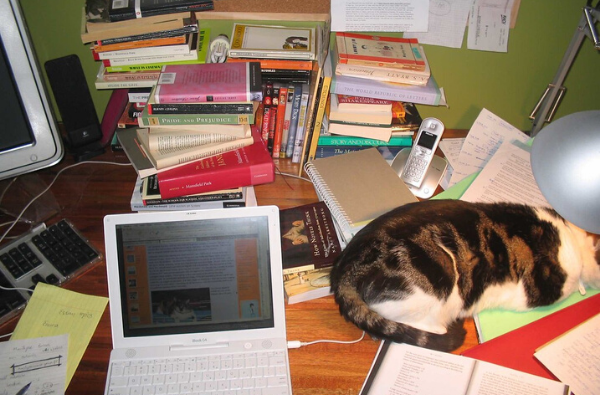Insights
INSIGHTS
All Topics
My Account
Best practice for conference calls
02 Apr 2020by Chloe Green
Now that working from home has become mandatory for lots of organisations, we’re all having to play with new styles of working, whether we were ready for it or not
Video conferencing is fast becoming the norm for everyday communication and collaboration, with many charities feeling their way into the world of digital conference platforms for the first time.
As we familiarise ourselves with new technology, it’s completely normal to feel like we don’t really know what we’re doing, and there have been a fair share of awkward moments and slip-ups reported.
Stories cropping up on social media illustrate some of the more amusing quarantine conference call faux pas that organisations have been committing – from dropping devices in the bath, to colleagues calling from the toilet with their webcam on, and accidentally turning themselves into a virtual potato, it hasn’t taken long into lockdown for some serious cringe to occur!
my boss turned herself into a potato on our Microsoft teams meeting and can’t figure out how to turn the setting off, so she was just stuck like this the entire meeting pic.twitter.com/uHLgJUOsXk
— Rachele with an e but pronounced Rachel (@PettyClegg) March 30, 2020
But could this be the ultimate video conference fail? Tech startups have reportedly been making staff redundant over a joint conference call – a move which could be considered insensitive at best, downright unethical at worst.
My friend just got laid off along with 400 other employees by dialing into a pre-recorded Zoom message. Her manager never even called to say goodbye. The virus may be out of your control, but how humanely you handle it is not.
— Julia Black (@mjnblack) March 27, 2020
Writing the rulebook
We’re all certainly stretching the boundaries of what is and isn’t considered acceptable etiquette, and while experimentation is no bad thing, organisations need to establish a framework of behaviours that will prevent the above mistakes and make video conferencing as efficient and productive as possible.
Once the novelty wears off, will we see the rapid rise of virtual-first organisations as the new normal? Only time will tell. After the pandemic is over, the convenience, travel cost savings and work-life balance benefits could cause many organisations to make a permanent shift towards at-home working.
It’s worth spending some time setting out a clearly communicated conference call policy now that ensures that virtual meetings are carried out effectively, and this might include some of the best practice tips below.
Ensure everyone knows the technology
Make sure everyone familiarises themselves with the technology before using it. This will not only eliminate the risk of accidentally videoing yourself naked or on the toilet, but also save time during calls and keep the focus on the meeting.
Everyone should test their audio and visual settings before the day’s calls, and leave time to fix any issues. There should be a designated techy person, whether IT staff or simply someone knowledgable in the platform, who team members know they can go to with questions.
They should also have a solid understanding of the platform used. Keep to one, consistent platform for all teams and provide access to online training and help videos, while letting people block out a time period to go through them. Zoom provides a how-to video library with quick answers to questions, and Skype has an extensive FAQ, as does Google Hangouts.
Have one meeting host who takes charge
Team management is important when people are remote, and meeting management even more so. The meeting host’s responsibility should be to set a clearly structured agenda which they share at the start of a meeting, to keep everyone focused on the meeting outcomes instead of the inevitable distractions of pets, partners, children and checking out the interior decorating taste of colleagues.
Keep audio to a minimum
Staying on mute in large meetings is good practice and eliminates distracting background noise and interference. Most platforms will enable you to hold down the space bar or another key to talk.
There are also ’raise your hand’ features in most platforms that allow people to indicate through an animated on-screen emoji when they want to speak, preventing everyone from talking at once.
Use collaboration tools
Features like on-screen sharing and virtual whiteboards can bring creativity to meetings and aid in the collaboration of ideas. They can be used in conjunction with shared document editing programmes like Google Docs or Microsoft Sharepoint, where everyone can edit the same document in real-time.
While whiteboarding can be difficult from most devices without a touch screen, consider joining the meeting with an iPad or tablet.
With Skype, meetings can also be scheduled using integrations with Outlook.
But make sure you know the privacy settings
A word of warning: make sure you’re only sharing things you want to share. As a heads up, Zoom saves private chats as meeting minutes that anyone from a meeting can download at the end. So ensure anything you communicate on the platform, even if its 1-to-1, is appropriate for all.
Incorporate team bonding time
Video conferencing doesn’t have to be all work and no play. Scheduled social time without a specific agenda helps everyone feel like they’re still part of the same team.
Zoom has tips on fun ways to incorporate community and workplace culture into working from home, like ’bring your pet to work’, virtual coffee breaks and lunches.
Limit video time
The potential downside of video is that staff might think they have to be constantly available, and this can both cut into productivity and affect stress levels. Working from home can blur the boundaries between work time and downtime where the end of a day’s work can start to creep up later and later.
Have a defined cut-off period for conference calls, eliminate ad-hoc ones by planning regular ones into the calendar, and promote self-care strategies for teams like taking regular screen breaks, having a set routine and going for walks, yoga breaks and other exercise.
More on this topic
Recommended Products
Our Events
Charity Digital Academy
Our courses aim, in just three hours, to enhance soft skills and hard skills, boost your knowledge of finance and artificial intelligence, and supercharge your digital capabilities. Check out some of the incredible options by clicking here.



















